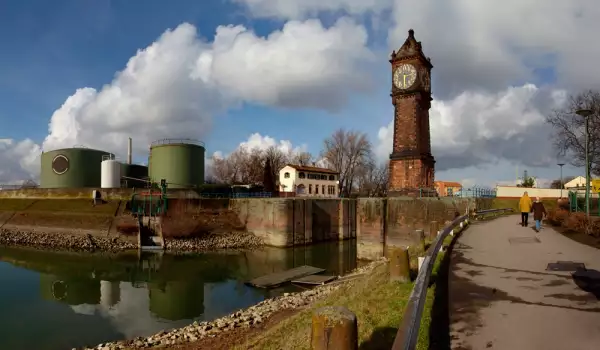Ludwigshafen

Ludwigshafen is a German town located on the west coast left of the Rhine in the German province of Rhineland-Palatinate. Known as Ludwigshafen am Rhein, it is a beautiful and relatively new city in southwestern Germany, opposite Mannheim on the opposite bank of the Rhine.
Immediately after Mainz, Ludwigshafen is the largest village in the province, along with Mannheim and Heidelberg. It is part of the European metropolitan region Rhine Neckar. Ludwigshafen is standing right in its central part, and is located opposite the place where the Neckar River flows into the Rhine Valley in the upper Rhine.
Ludwigshafen is known today mostly for its chemical industry and that it is the biggest river port in the province of Rhineland-Palatinate. Ludwigshafen officially existed as a city in 1859. In the 19th century, the king of Bavaria ordered the development of the port and around it- the village, which later causes the Bavarian King Maximilian II to declare the settlement a town.
Over the next few decades Ludwigshafen experiences rapid prosperity thanks to the rapid expansion of chemical and other industries, as well as its port. During the last decades of the 19th century and early 20th century, the population of Ludwigshafen was increasing steadily and in 1925 it reached 100 000 inhabitants.

Ludwigshafen is one of the cities who suffered serious damage as a result of bombing during World War II. The almost destroyed major city was quickly restored in postwar modern architecture.
Ludwigshafen today is an important railway junction, commercial center and part of the wine region of the Rhine. The city is known for its chemical industry, which was established in 1860. Production of motor vehicles, electrical appliances, machinery and trade are fundamental to the city from the opening of the port in 1897. Ludwigshafen is home of BASF, which employs about 32 600 workers.
Ludwigshafen is an industrial city, which does not mean that it lacks cultural attractions. Moreover, the space along the Rhine is transformed into a pleasant area for recreation, entertainment and work. One of the cultural attractions of Ludwigshafen is the City Museum, which was founded in 1984. The building is located in the central part of town, called Rathaus Center.
You will recognize it easily, because the museum is the tallest building in the center of Ludwigshafen. It can not boast particularly rich exposures, but inside it, you can learn all about the history of the village from ancient times until today. There is room for visiting exhibitions.
Wilhelm-Hack-Museum is the largest museum of contemporary art in the city of Ludwigshafen. The facade is very beautiful crafted mosaic of Joan Miro, with a length of 55 and height 10 meters. The museum was founded in 1979 based on the collections of the Cologne art collector Wilhelm Hack, consisting of notable works of abstract art from the 20th century. The very central part of Ludwigshafen is small, and the museum is dominated by the ruined monument the Lutheran Church Lutherkirche.
Among other attractions is the temple Ludwigshafen Mariä Himmelfahrt, dating from the 1775-1577 period. Particularly remarkable is the chapel Loreto-Kapelle, which is an exact replica of the Santa Casa in Loreto, which according to legend, is the birthplace of the Virgin Mary. Along the Rhine, you can see the clock tower Pegelturm. Ebertpark, built in 1925 is a city park of Ludwigshafen, where one can walk among fountains and lawns.








